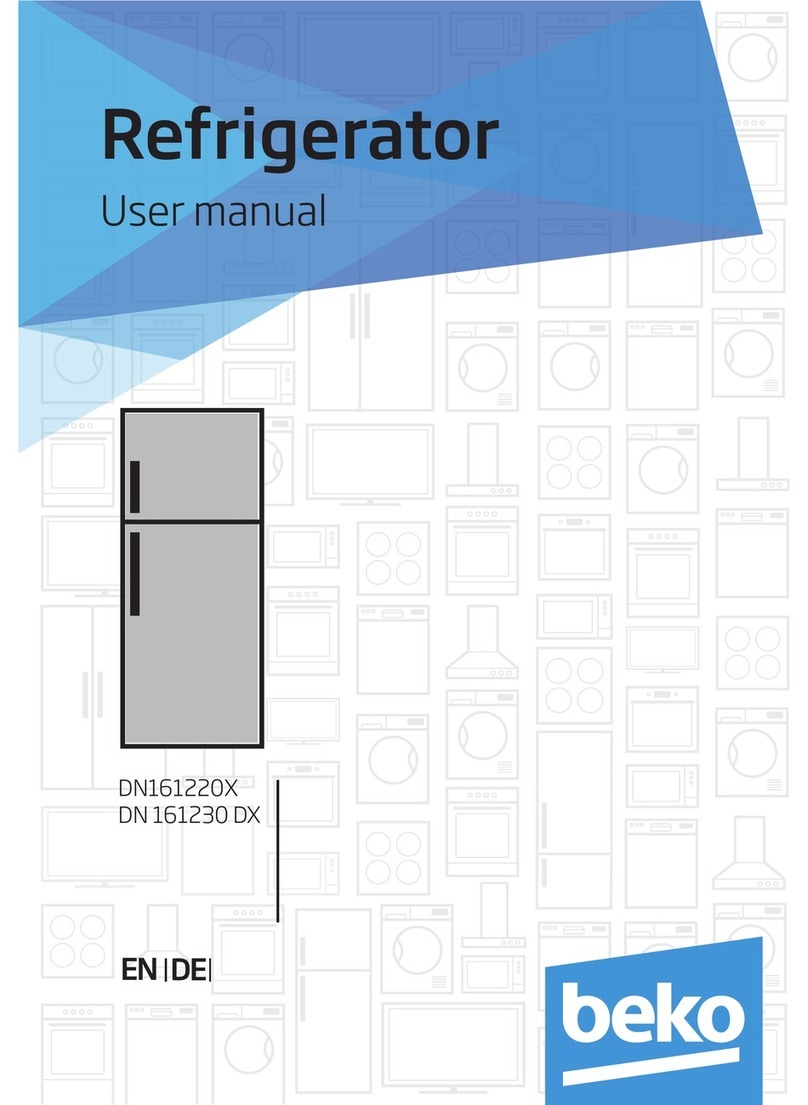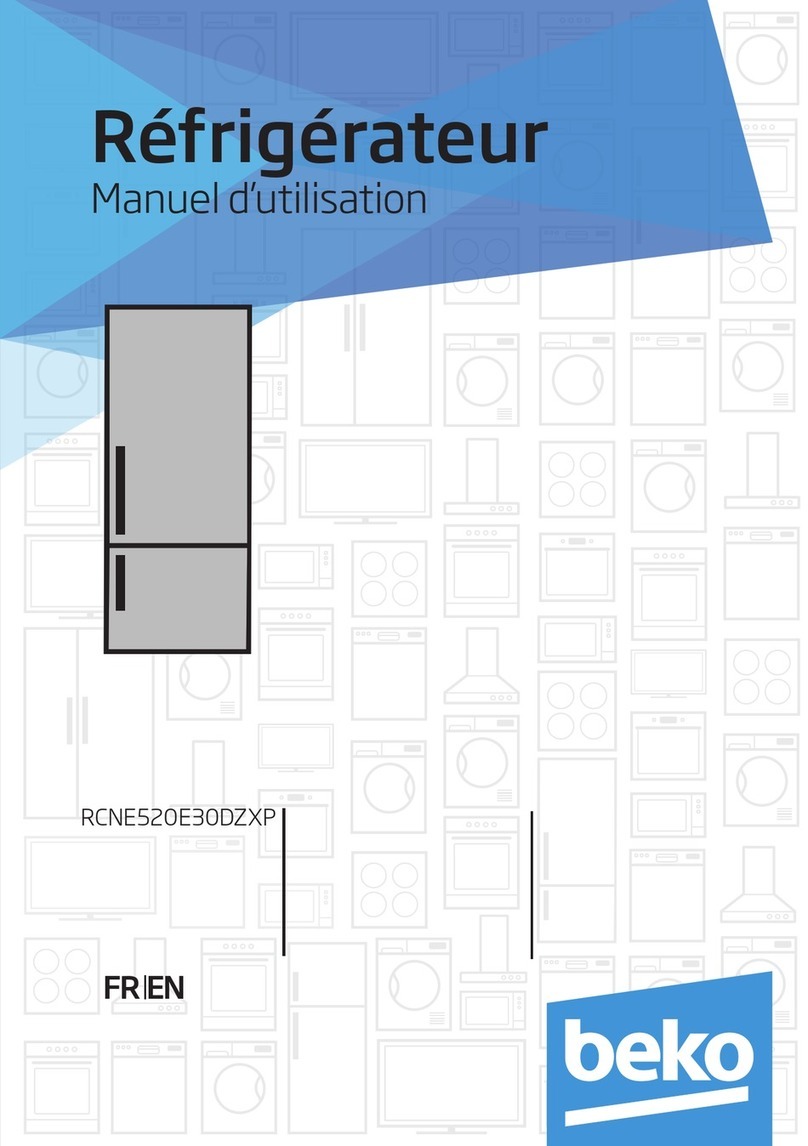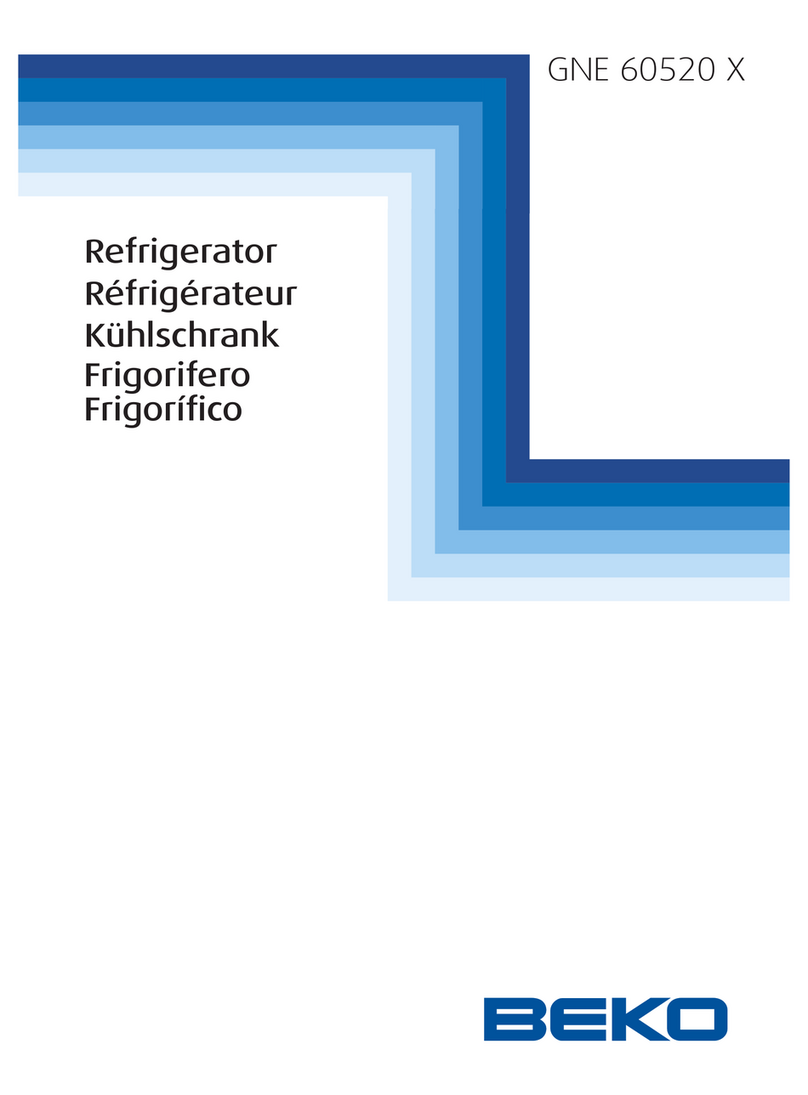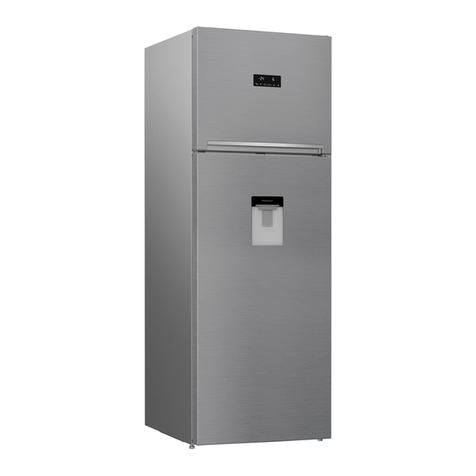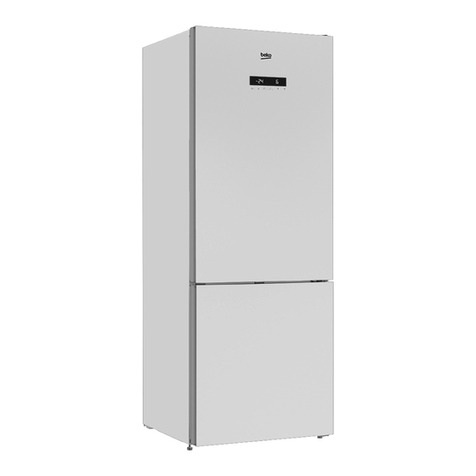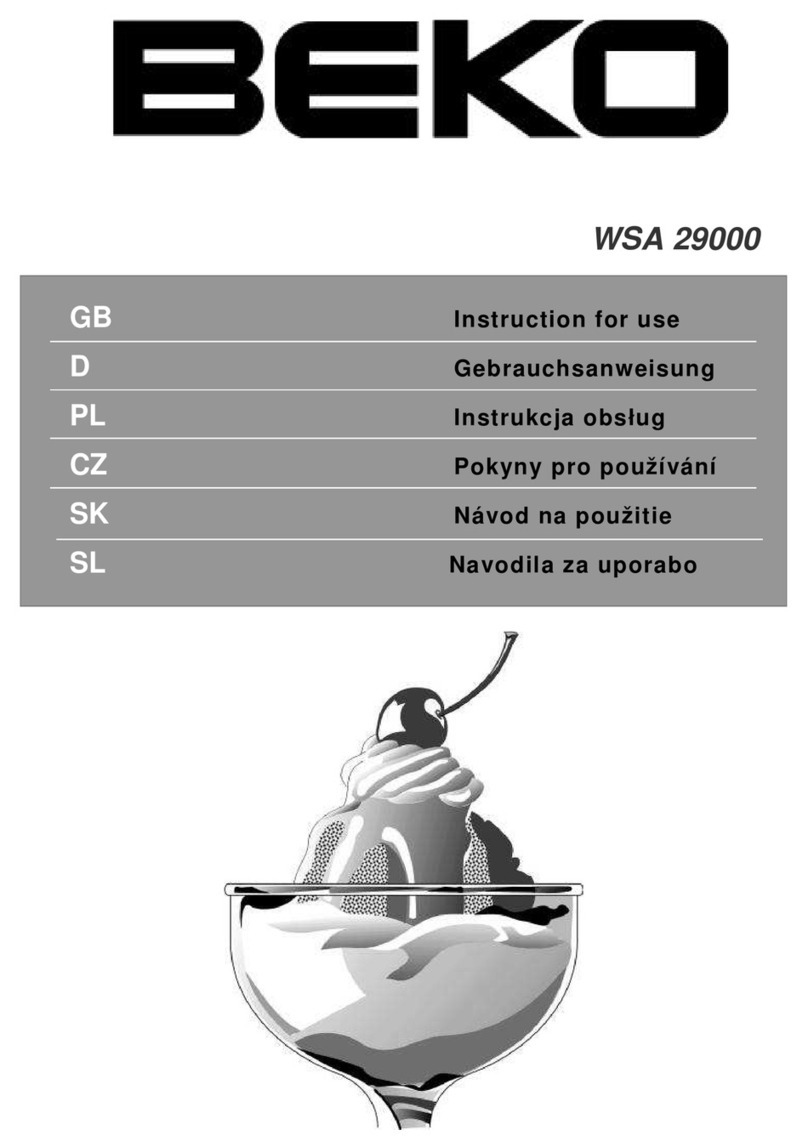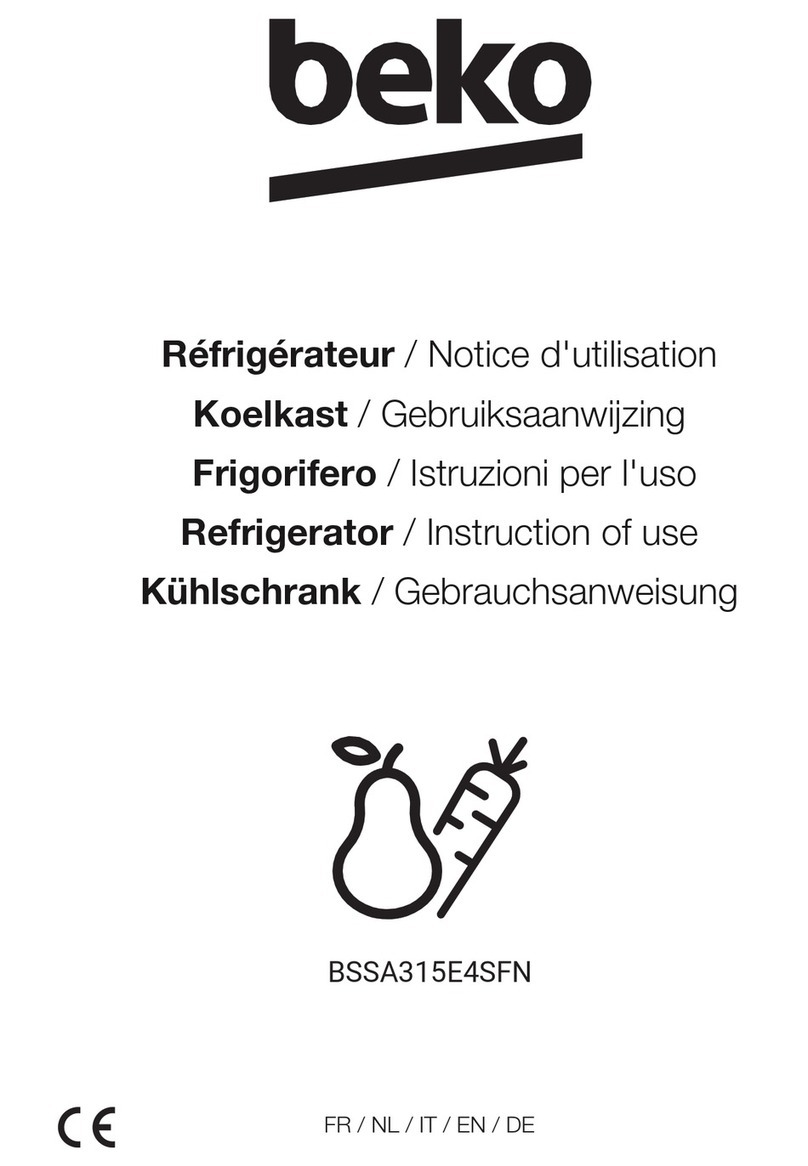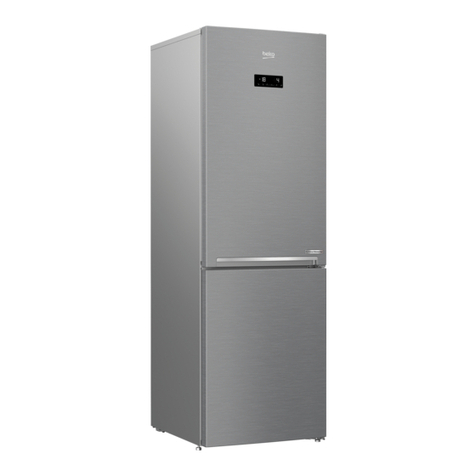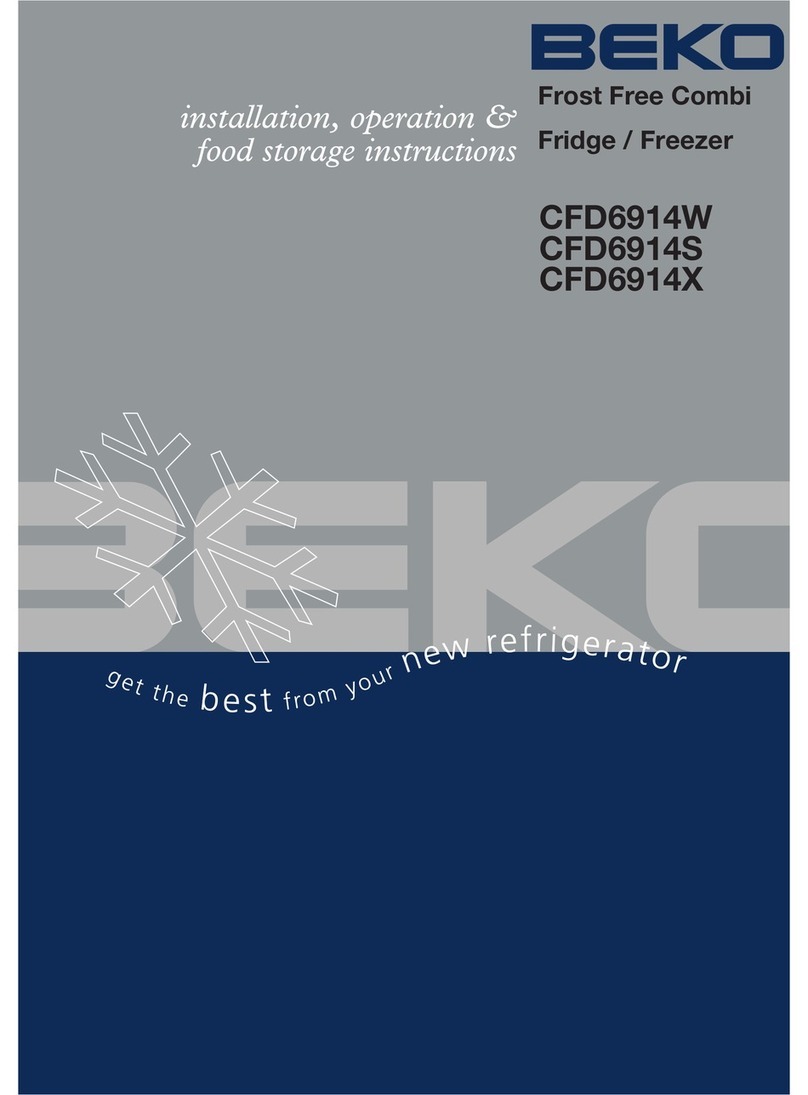WARNING!
In order to ensure a normal operation of your refrigerating appliance, which uses a completely environmentally
friendly refrigerant the R600a (flammable only under certain conditions) you must observe the following rules:
Do not hinder the free circulation of the air around the appliance.
Do not use mechanical devices in order to accelerate the defrosting, others than the ones recommended by the
manufacturer.
Do not destroy the refrigerating circuit.
Do not use electric appliances inside the food keeping compartment, other than those that might have been
recommended by the manufacturer.
ADVERTENCIA !
Para asegurarse del funcionamiento normal de vuestro refrigerador, conteniendo le refrigerante R600a que
contribuye a la protección del ámbito (inflamable sólo en ciertas condiciones), le conviene a respectar las reglas
siguientes :
No impide la circulación del aire alrededor del aparato.
No utilize utensilios mecánicos o otros dispositivos para acelerar el proceso de descongelación otros de los
recomendados por el fabricante.
No cause daño al circuito refrigerante.
No utilize aparatos eléctricos en el interior de los compartimentos de la conservación de los alimentos, si estos
no están conformes con el tipo de aparato recomendado por el fabricante.
UWAGA!
Producent nie będzie ponosić odpowiedzialności za szkody wynikłe z niestosowania się do zaleceń zawartych w
instrukcji obsługi. Instrukcję obsługi należy przechowywać w bezpiecznym miejscu tak, aby można było z niej
korzystać w razie konieczności. Może być ona przydatna również dla innego użytkownika.
VAROVANIE!
Aby sa zabezpečila normálna prevádzka vašej chladničky, ktorá používa úplne ekologicky nezávadné chladivo
R600a (horľavé len pri určitých podmienkach), musíte dodržiavať nasledujúce pravidlá:
Nebráňte voľnej cirkulácii vzduchu okolo spotrebiča.
Nepoužívajte mechanické prístroje na urýchľovanie rozmrazovacieho procesu, iné ako odporúča výrobca.
Neporušujte chladiaci okruh.
Nepoužívajte elektrické spotrebiče vo vnútri pípacieho priestoru potravín, iné ako tie, ktoré odporúčal výrobca.
UPOZORNĚNÍ!
Aby byl zajištěn normální provoz vaší chladničky, která používá pro životní prostředí zcela neškodné chladicí
médium R600a (vznětlivé pouze za určitých podmínek), musíte dodržet následující pravidla:
Nebraňte ve volné cirkulaci vzduchu kolem přístroje.
Nepoužívejte mechanická zařízení pro zrychlení odmražení kromě těch, která jsou doporučená výrobcem.
Nelikvidujte chladicí okruh.
Nepoužívejte elektrické spotřebiče uvnitř prostoru pro potraviny kromě těch, která by mohl doporučit výrobce.
УВАГА!
Для того, щоб забезпечити нормальну роботу Вашого холодильника, в якому використовується
охолоджуючий реагент R600a, абсолютно нешкідливий для навколишнього середовища (займається лише
за певних умов), Вам
Необхідно дотримуватися наступних правил..
Не створюйте перепон для вільної циркуляції повітря навколо холодильника.
Не користуйтесь жодними механічними пристроями та інструментами для видалення льоду під час
розморожування холодильника, окрім тих, що рекомендовані виробником.
Не допускайте пошкодження охолоджуючого контура.
Не встановлюйте всередину холодильного відділення, де зберігаються продукти, жодних електричних
пристроїв, окрім тих, що рекомендовані виробником.
